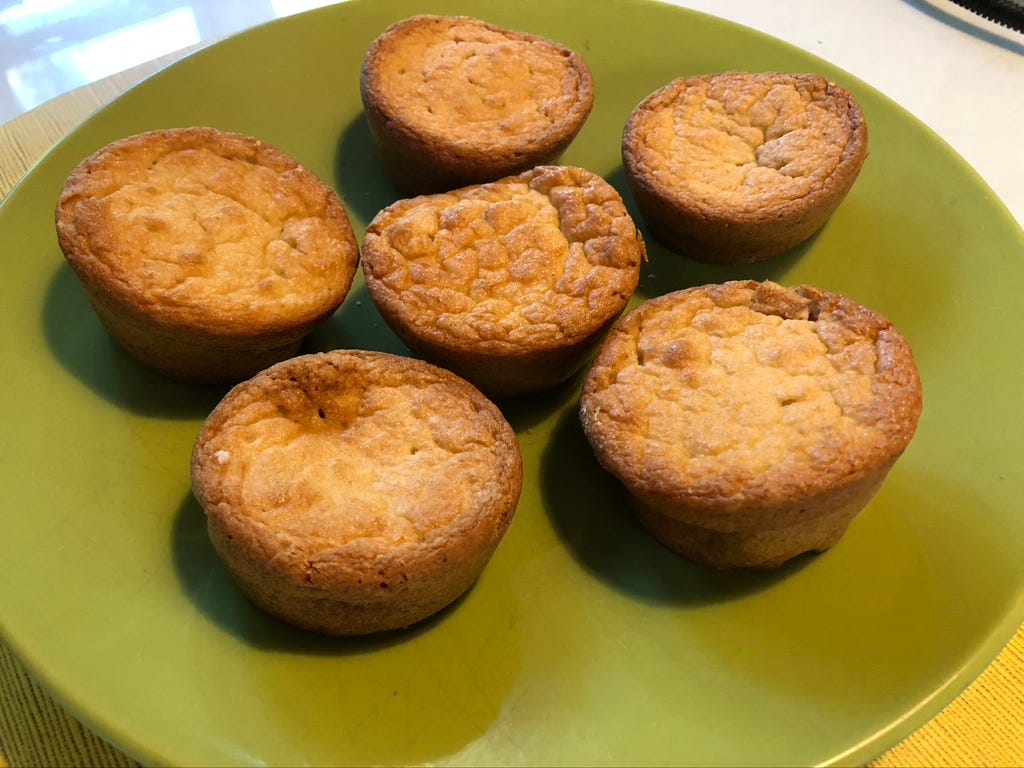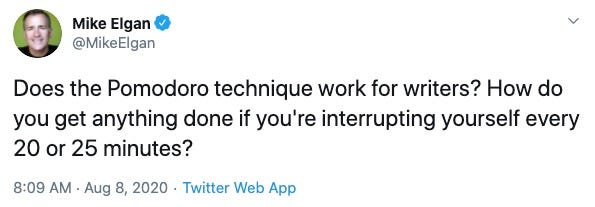The Magnet 0001 — Marvel Mini Books
Marvel Comics' tiny capsule vending machine books, a problem-solving tip from Richard Feynman, how to avoid doomscrolling, a super low-carb bread recipe, and more.

Welcome to the first issue of The Magnet! Every week I’ll include tips I find useful, recommendations of things that interest me, what I've learned, interviews, recipes, quotations, and more. I’ll also include excerpts from my favorite newsletters. The first few issues will be free, and I hope you’ll like it enough to subscribe. For a limited time, you can subscribe to The Magnet at a special introductory rate by clicking the button below:
To read about why I launched The Magnet, click here.
CURIOSITY
Marvel Comics Mini-Books from 1966 re-issued

Amazing Spider-Man Marvel Comics Mini-Book from 1966
In 1966 Marvel Comics published a series of “Mini-Books.” They measured ⅝" by ⅞" (smaller than a standard-sized US postage stamp!) and were sold exclusively in 10-cent capsule toy vending machines across the United States.
A total of six titles were issued, each of which featured a different Marvel superhero (the Amazing Spider-Man, the Incredible Hulk, the Mighty Thor, Captain America, Sergeant Nick Fury, and Millie the Model) in 50 pages with minimal narration and art.

The Mini-Book pages are smaller than a U.S. postage stamp
This month, Abrams ComicArts is releasing the Marvel Comics Mini-Books box set. It includes hardcover facsimile editions (enlarged to 4.25" by 7.25") of all six Mini-Books plus a seventh book with Mark Evanier’s delightful “mini-history” of these mini-books. Unfortunately, the books weren’t reproduced as exact duplicates of the original mini-books (although the seventh book reproduces the actual size pages as shown in the photo above).
Capsule toy vending machines can still be found in the US but are nowhere near as prevalent today as they were in the 1960s. However, in Japan, capsule vending machines are ubiquitous and are filled with amazing collectible toys — scale models of human organs, replicas of vintage photography equipment, sumo wrestlers, sushi, and tiny eyeglasses. The last time I was in Japan I took photos of one of the many stores that contained hundreds of capsule vending machines. They’re called gashapon, which is onomatopoeia for the sound of the crank makes when you turn it (“gasha”) and the sound when the plastic capsule drops onto the tray (“pon”).

A gashapon store I visited in Kyoto, Japan in 2018
NEWSLETTER HIGHLIGHTS
David Perell is the author of Monday Musings, a “celebration of learning and curiosity.” In the 3 August 2020 issue, he wrote about “beautiful questions” and “favorite problems” which included a quote from physicist Richard Feynman on the importance of keeping a list of favorite problems running as a background process in your head:
Keep a dozen of your favorite problems constantly present in your mind
On the theme of questions, I'm reminded of Richard Feynman, who once said: "You have to keep a dozen of your favorite problems constantly present in your mind, although by and large they will lay in a dormant state. Every time you hear or read a new trick or a new result, test it against each of your twelve problems to see whether it helps. Every once in a while, there will be a hit, and people will say, 'How did he do it? He must be a genius!'"
Per Feynman's suggestion, here are my 12 Favorite Problems.
Why is this interesting? is a daily newsletter from Noah Brier and Colin Nagy that touches on a wide array of topics. It’s one of my favorite newsletters because it is so unpredictable. The 3 August 2020 issue has advice for improving your media diet:
How to avoid doomscrolling
I do enjoy the news but have tried to stay away from aimlessly browsing mainstream news publications or headlines for the last few years which has definitely given me a lot of time back and significantly reduced my level of daily angst.
One delightful habit that a friend turned me on to a few years ago is always keeping a stack of long reads (usually 20-40 mins) from publications like Jacobin, Pro Publica, The New Yorker and other in my Pocket so that whenever I have some free time somewhere, I can pick up a fascinating deep dive piece instead of being distracted by the headline du jour.
Australian writer and editor McKinley Valentine describes The Whippet as a “newsletter for the terminally curious.” She finds amazing things to write about in every issue. In the 7 August 2020 issue, she takes a look at the origin of the term “weasel words”:
“Weasel words” have a more interesting origin than you think
Weasel words are modifiers that weaken a sentence, so you’re not actually committing to saying anything at all. Sometimes, often, can be said to. If a health supplement is found to not actually do anything at all, they can weasel out of it because “we only said it may help to promote good health - not that it actually does help.” Politicians won’t give their own opinion, they hint that others may have an opinion. “Many are saying…”
(Wikipedia has a good list, it’s worth teaching yourself to notice them.)
Anyway I always thought they were called weasel words because they’re sneaky and deceptive, like a weasel.
In fact, people used to think weasels suck the contents out of eggs (they do steal and eat eggs, but they don’t suck them). So a weasel word is one that has sucked all the meaning out of the words next to it, left them hollow.
Stewart Chaplin in 1900: “words that suck the life out of the words next to them, just as a weasel sucks the egg and leaves the shell”.
RECIPE
Very low-carb almond flour bread

I love the taste of high carb foods, but I tend to quickly gain weight when I eat a lot of them. In April, I decided to return to a low-carb diet and practice intermittent fasting. I’ve lost 25 pounds so far. Now, I don’t mind as much getting on my knees to unplug a cord under the desk.
For the last few months, I’ve been experimenting with making bread that tastes high carb but is very low in carbs, and I have finally arrived at a recipe that I think is worth sharing. (Here’s the recipe I started with.) All four of us in my family really like it. The high-fat content of the almond flour means you don’t have to add butter. They taste great right out of the oven!
Ingredients:
1.5 cups almond flour (I use Anthony’s)
2 tsp baking powder
1 tsp salt
½ tsp xanthan gum
1 cup water
2 tsp cider vinegar
3 egg whites
Instructions:
Preheat oven to 350°F.
Start boiling the water.
Mix all the dry ingredients in a big bowl.
Mix in the vinegar and egg whites, stirring with a spoon.
Add boiling water and stir until mixed. (It will be a little soupy.)
Ladle the mixture into a non-stick cupcake tin.
Bake for about 45 minutes, until the bread turns golden brown.
TIP
How I use Pomodoro
Tech journalist Mike Elgan recently tweeted: "Does the Pomodoro technique work for writers? How do you get anything done if you are interrupting yourself every 20 or 25 minutes?”

If you're not familiar with the Pomodoro productivity technique, the basic idea is simple: You set a 25-minute timer with the intention of not doing anything other than working on a particular task. That task could be working on a PowerPoint presentation, conducting research, outlining a report, cleaning your kitchen, etc. After the timer goes off, you are allowed a five-minute break to do something fun and refreshing before doing another Pomodoro’s worth of work. After you've done four or five "Pomodoros" you are rewarded with a 25-minute break.
Mike's question was good, because sometimes when you’re in the middle of doing something you don't want to stop. The reason I use Pomodoro is to get started. For me, starting a timer is an easy way to "force” myself to begin a task, such as writing. When the timer runs out I usually ignore it because I’m in a flow state and I don't need any goading to keep going.
Sketchplanations has a good, short guide to the Pomodoro Technique.
QUOTE
“Money is the best bait to fish for man with.” — Thomas Fuller, Gnomologia (1732)
Thomas Fuller (1654-1734) was an English medical doctor and preacher. Google Books has a full scan of his 1732 book of Gnomologia: Adagies and Proverbs; wise sentences and witty saying, ancient and modern, foreign and British, which has 6,496 pieces of mostly excellent advice.
Thanks for being an early subscriber to The Magnet. If you liked this issue please share it by clicking the button above. — Mark

Hi Mark, I finally pulled the trigger and subscribed. It was the 8 Nonfiction books that you found very valuable that got me. I am very happy I now have access to all of The Magnet. I have to say that I am continually impressed with amazing content the further I fall into the Cool Tools media ecosystem. Thanks for your thoughtful and useful tips. Between this newsletter, Recomendo, and Gareth’s newsletter, I literally use something daily from these sources. Keep up the great work!